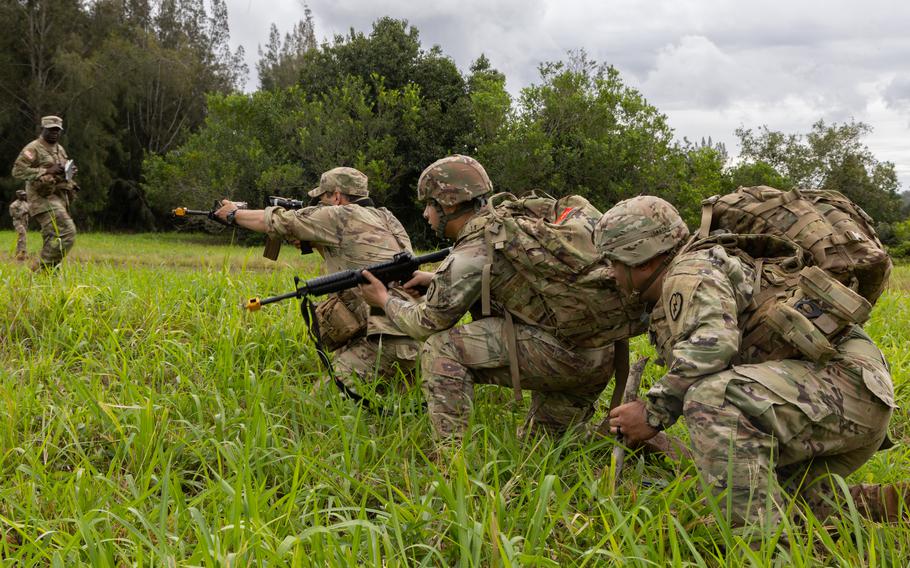
Soldiers train at East Range on Schofield Barracks, Hawaii, Feb. 1, 2024. The Army will be lighting controlled burns at its Schofield Barracks training range complex this week in an effort to prepare for and prevent potential wildfires as Hawaii’s rainy season dries up. (Jared Simmons/U.S.Army)
HONOLULU (Tribune News Service) — The Army will be lighting controlled burns at its Schofield Barracks training range complex this week in an effort to prepare for and prevent potential wildfires as Hawaii’s rainy season dries up.
The Army’s Wildland Fire Division is scheduled to begin the prescribed burn Monday and continue through Friday in an effort to clear invasive and highly flammable guinea grass and other vegetation that can become large fuel sources for brushfires. These grasses played a central role in the spread of the August fire on Maui that destroyed Lahaina and killed more than 100 people.
“The prescribed burn is a critical piece of the Army’s management of threatened and endangered species,“ the Army said in a media release, noting that uncontrolled fires threaten species such as the Oahu elepaio, an endangered flycatcher bird that lives in habitats above the range. More than 30 species of endangered plants and animals call the range and surrounding area home.
“Prescribed burns help prevent brushfire outbreaks on our training ranges, and can reduce the number of brushfires by upwards of 70 % annually,“ said Justin Turnbo, Wildland Fire Program Manager, U.S. Army Garrison Hawaii. “We anticipate completing the burn in approximately three days ... there’s a short time period following the wet winter months when all prescribed burn parameters are right, prior to the dry summer months.”
According to a media release, the Army has approval from the state Department of Health’s Clean Air Branch in coordination with the U.S. Fish and Wildlife Service to ensure all state, federal and Army requirements are met. During the burn, a variety of specialists will be on site, including firefighters, aviators, engineers, range and safety officers, natural and cultural resources specialists, explosive ordnance disposal personnel and law enforcement personnel.
The Army said operations will only take place during daylight hours, and Army Wildland firefighters will remain on site each night to monitor the area. Army staff will also monitor humidity and wind in an effort to minimize smoke and ash.
“Controls on the smoke duration and amounts are very important, and we will be monitoring weather data, smoke production and fire behavior to make informed decisions and adjustments as needed,“ Turnbo said. “We will be taking all feasible precautions to lessen potential impacts on our neighbors.”
The deadly and destructive 2023 fire season in Hawaii has raised concerns about wildfire preparedness across the state, and officials have warned that a wetter-than-expected rainy season before what is expected to be a hot and dry summer could have created more fuel for fires across the islands. As the rainy season comes to an end, the latest U.S. Drought Monitor shows about 17 % of the state is already in severe drought, while 25% is in moderate drought. (c)2024 The Honolulu Star-Advertiser
Visit at www.staradvertiser.com
Distributed by Tribune Content Agency, LLC.